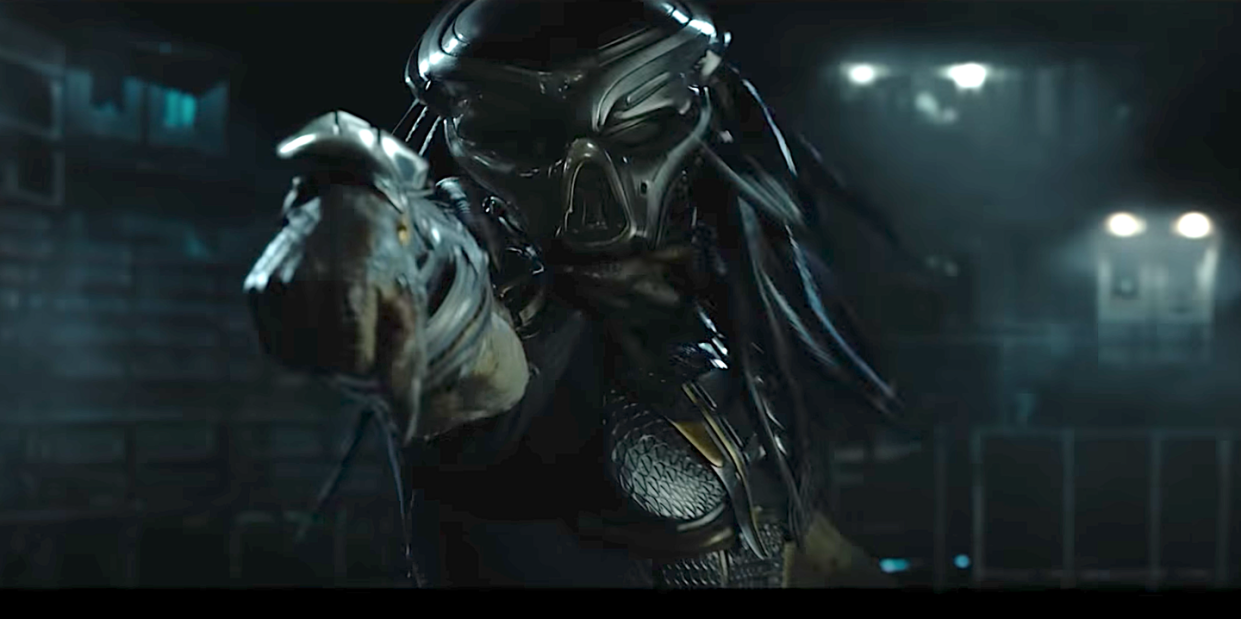Movie monster hybrids: The sign of a flagging franchise?

A new trailer for Shane Black’s The Predator launched online yesterday, introducing the world to a bigger, more deadly variant of the classic monster.
As the film’s tagline says, “the hunt has evolved,” and it looks like there’s a new Predator hybrid with enhanced size, strength, stamina, and intelligence who appears to have been after infused with the DNA of other species into their own.
This “hybrid” storyline follows in the footsteps of many a sci-fi sequel though not everyone is happy with it. Several people on Reddit have complained after seeing the trailer.
“I hate this need to always one-up or change what came before,” writes one Reddit user.
“The predator design and mythology was fine and still had plenty to play around with without needing to pull this whole ‘oh look, there’s something even bigger!’ s**t.”
He has a point. The concept of introducing new movie monster hybrids to freshen up a franchise isn’t new, but it hasn’t delivered the finest of sequels and the Alien franchise is a prime example of when it goes wrong.
Alien 3 introduced a new xenomorph species called the “Runner” or “Dog Alien,” which was created after a dog was impregnated by a facehugger.
This was nothing compared to what was to come in Alien: Resurrection. The fourth film in the series (written by Joss Whedon) introduced a human-xenomorph hybrid called “the newborn”. Ripley’s “child” was part snarling beast, part pink-skinned human, but the final effect was all awful and it basically derailed the franchise for good.

That was until the Alien v Predator films said “hold my beer” and beat the hybrid trope to death with the so-called “Predalien”. The Predator-xenomorph was introduced in the closing scene of 2004’s Alien v Predator, before unleashing it fully in 2007’s execrable sequel Alien v Predator: Requiem to much derision from fans and critics.
Even the franchise prequels Prometheus and Alien: Covenant have explored the themes of species hybridisation with mixed results.

The same can be said for the Jurassic World series. When Colin Trevorrow was tasked with bringing the dinos back for more mayhem in 2015, he turned to the hybrid trope in a bring a new dimension to the series. It also offered a commentary on the current state of movie blockbusters.
“Nothing in Jurassic World is natural,” explains BD Wong’s Dr Wu, “we have always filled gaps in the genome with the DNA of other animals. And if the genetic code was pure, many of them would look quite different. But you didn’t ask for reality, you asked for more teeth.”
“The creation of that hybrid animal is done for one reason alone — to make a lot of money,” Trevorrow explained. “We create a lot of monsters in the name of money. And if I were to look back at the last 22 years and the lessons that we’ve learned about making a new science-fiction film, it seems like that’s a recurring theme.”
Simply put, people were bored of dinosaurs, so they needed to make them more thrilling. It was also meant as a parable for Hollywood blockbusters with their escalating levels of peril and VFX wizardry that can destroy entire planets, and level cities with the click of a mouse.

It’s not just sci-fi franchises that are guilty of flogging the hybrid narrative too. Underworld set up the hybrid storyline with Michael Corvin (Scott Speedman), who masters his powers in the sequel Underworld: Evolution and then in Underworld: Awakening, the hybrid child of Michael and Selene (Kate Beckinsale) is introduced, though the latter films showed no signs of improvement from the original.
And let’s not forget the critical and commercial mauling the tenth Friday the 13th movie, Jason X, got when it was released which turned the titular character into a hybrid cyborg menace and in space, no less.
Sometimes, the movie monster hybrids work out for the best. The introduction of the evolved T-1000 in Terminator 2: Judgment Day gave James Cameron’s sequel a worthy new adversary for Arnie’s Terminator-turned-good, and became an iconic villain in itself. Gremlins 2’s spider-Gremlin was perfectly played for laughs and was a welcome escalation for the comedy-horror series.
How this new super-Predator will pan out in The Predator remains to be seen and we’ll have to wait until September 13 to find out.
READ MORE
Sam Claflin on YA film genre’s demise
Benicio del Toro on finding his conscience in Sicario 2
How to make it as a comic book writer

 Yahoo Movies
Yahoo Movies 
